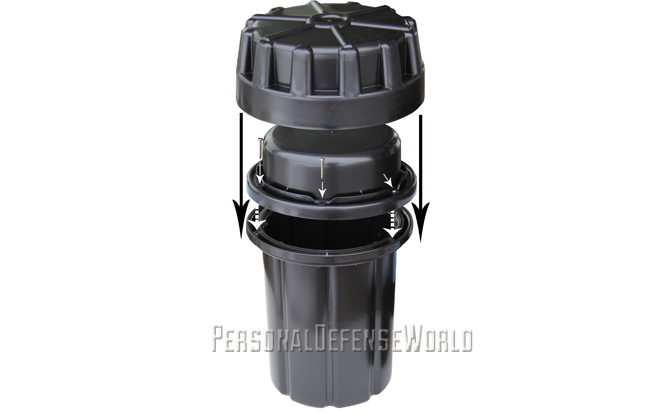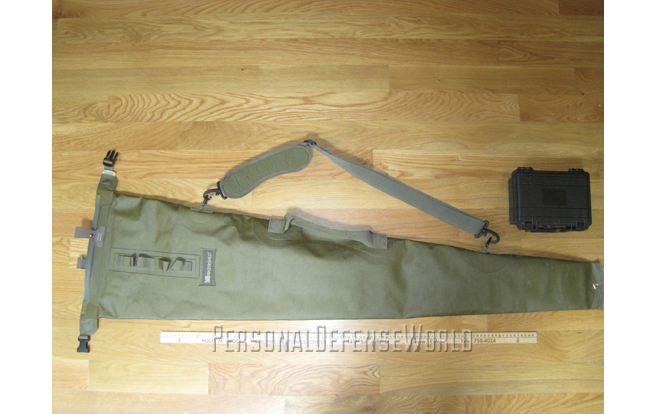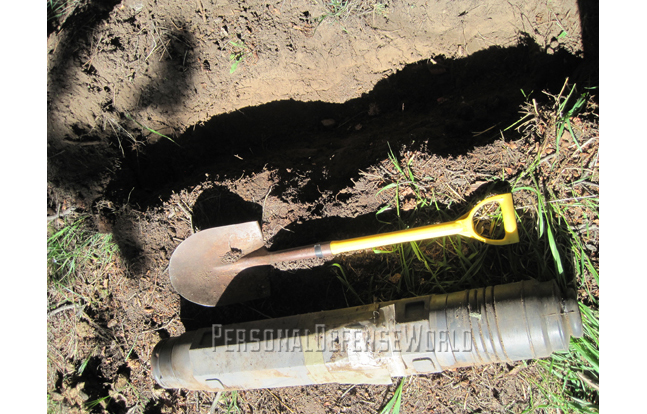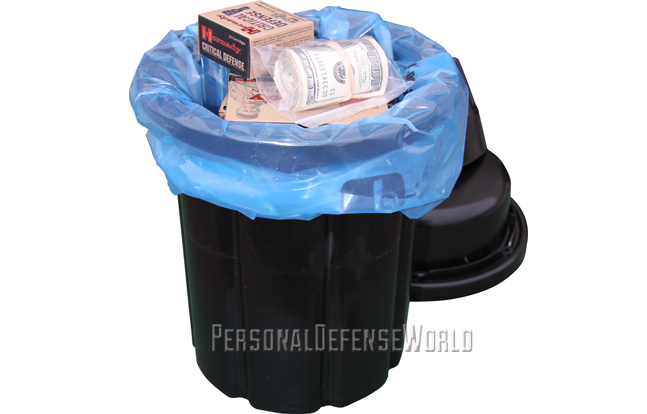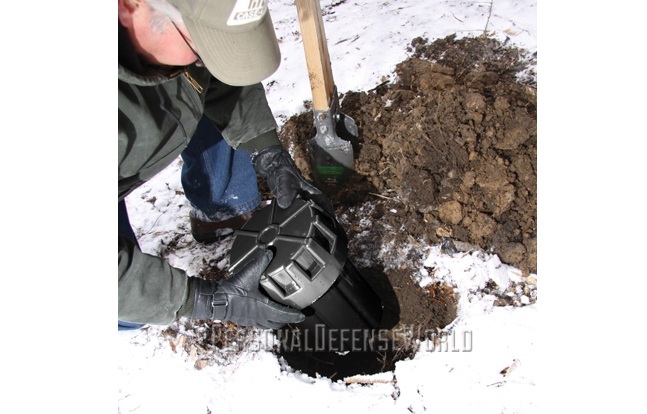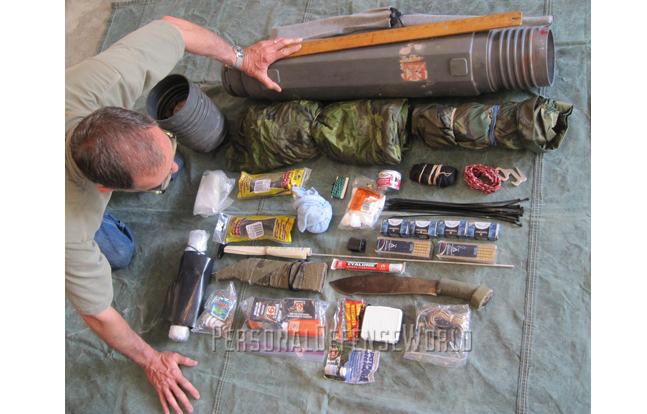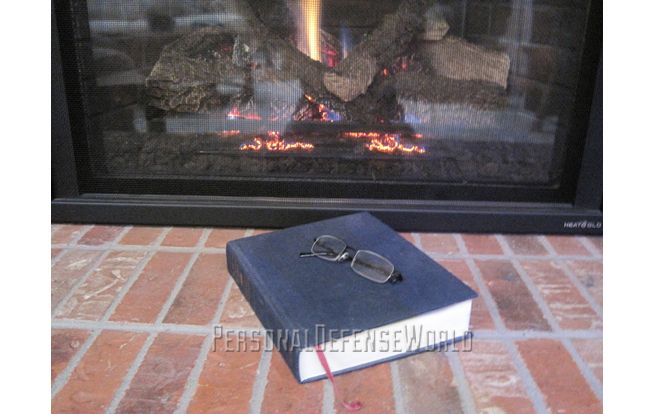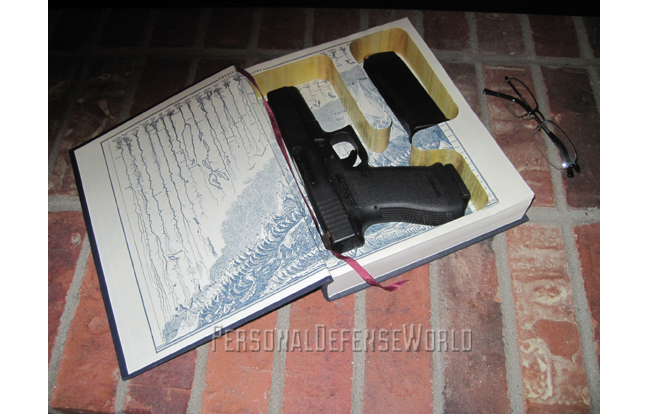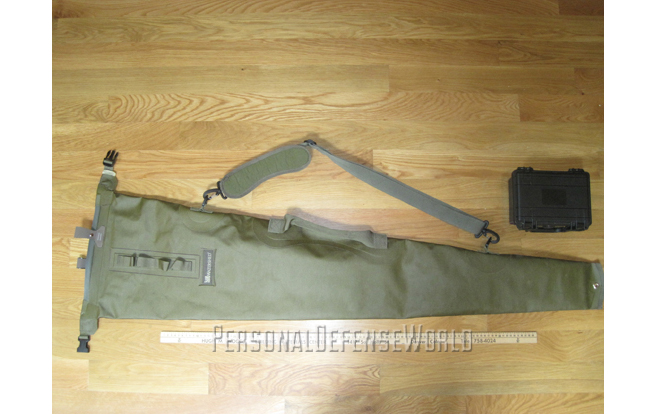None of us want to lose our hard earned and most precious belongings, so planning for the worst-case scenario is prudent. And your precious Second Amendment metal is particularly valuable because it enables you to protect your loved ones. As the U.S. and foreign economies continue their downward trend, desperate people are more likely to become thieves and burglars. Add to that the new, restrictive firearms bills that could become law and expose your firearms to confiscation.
Keeping guns and ammunition dispersed and hidden makes good sense in this changing world and takes thoughtful planning. If you choose to keep a gun or two handy for protection, consider hiding them in plain sight. If you choose to bury most of your weapons, your methods will follow a different track. For example, when selecting items to bury, you need to anticipate all the seasons and how long will it take you to reach and open your secret cache. A safe full of firearms and cartridges provides a secure feeling, but imagine the following: Mistaking you for a felon with the same name, federal or state law enforcement agents storm your home, take your hard-earned possessions and leave you a receipt; then months elapse before your firearms are returned. What would you have to protect your family with in the meantime? If the answer is almost nothing, then you need options. Also, burglars are using effective tactics: They break into a garage, wrap a steel winch cable around the safe, winch it to their truck, drive away and then break into it later without any concern of noise or time.
Go Underground
Burial is a proven method of safekeeping because, if thieves don’t know where to dig, they won’t. For the most part, burying a number of small caches is easier than burying one large one. Digging a hole for something the size of a football can be done with a trowel in minutes, but digging one for a suitcase requires a spade and takes much longer. Also, be careful to not bury your container so deep that you can’t dig it up if you’re exhausted or injured—you won’t know what your future circumstances will be. Burial keeps your contents safe despite fire, flood and theft. Another method is to entrust part of your armory to a close friend or relative. But either of these methods precludes your immediate access to the weapons.
Advertisement — Continue Reading Below
Placing your cache in a waterproof container is mandatory. Groundwater can ruin your precious contents, and a non-watertight container can emit odors that attract animals. Ammo boxes make excellent cache containers for small items because of their availability, low cost and waterproof construction. Dry bags are another option, unless your region is a habitat for raccoons or bears, which can shred a waterproof bag in seconds. Whitewater-rafting outfitters are an excellent source for waterproof tent bags, which are ideal for housing long guns. Gun-show vendors and surplus stores often sell rocket or missile containers and similar items that are inexpensive and ideal for direct burial. Include a bag of silica gel (moisture absorber), and always apply a bead of silicone adhesive where the cap meets the body. After neglecting to seal a cache ten years ago, I paid a heavy price after opening it and finding moisture had ruined some of the contents.
Metal detectors are becoming less expensive and more sophisticated, so use countermeasures to foil treasure hunters by tossing iron or steel scrap over your cache. Most people will stop digging after discovering the scrap. Doghouses are great for caching because you can hide items inside in plain sight. Construct your doghouse to maximize concealment and operational security. Large-diameter PVC pipes and end caps can digest numerous items, cannot be detected by a metal detector, and are inexpensive and available at home improvement stores. Again, use silicone caulking or adhesive to join the cap and pipe.
If applicable, choose a place that you can find under deep snowfall. Select a place that’s fairly easy to walk to or is on the way to your fallback position—even in bad weather and at night. Hide a headlamp (lithium batteries have a 10- to 15-year shelf life) and digging tool nearby so that you can access your cache quickly. Be sure the food and liquid you’re including will not leak, rot or decompose and possibly ruin other items. During winter months assume that your water will freeze and have to be melted. Include cash, maps, clothing and anything else that you might need in the event of a worst-case scenario.
Advertisement — Continue Reading Below
Other Hides
Most paint stores sell empty paint cans for custom-mixed paint, which you can buy and fill with smaller valuables. Wrap an old label around the can, smear paint around the lid, place it among other paint cans, and your cache becomes invisible. Forced-air heating ducts can hide quite a bit. Just be careful to not overload them lest they buckle, defeating the purpose. And make a note to be present when anyone is working on your furnace because a diligent worker may try to figure out why some of the ducts aren’t working to capacity.
Burglars are in a hurry—they want to get in and out in a few minutes. No one knows your house or apartment better than you. So take time to figure out the optimum tradeoff between security and quick access. Keeping a handgun between a box spring and mattress is a bad idea, and a nightstand is no better. But a hollow book in a bookcase will probably go unnoticed. If you’re a woodworker you can build any number of secret panels that can conceal handguns and long guns. A gun on a robe hook covered by robes or coats will likely escape detection from those in a hurry.
Thoroughly think through the issue of long-term storage and immediate-access concealment. If you’re concerned that authorities may visit you, understand that they will be thorough, patient and uncaring about your property. Accounts of federal agents ransacking law-abiding citizens’ homes are commonplace. Please don’t think that you will successfully hide anything inside your home. You stand a much better chance outdoors. Ever consider a sandbox for the kids with a false bottom? Walk your home’s perimeter or examine your apartment’s underground garage. Ever notice the freestanding, earth-tone utility boxes, the ones that state “WARNING—Underground Cable”? They’re usually the property of a phone or cable company and are so common that they’ve become invisible. If one appeared in your yard, would anyone notice?
Advertisement — Continue Reading Below
Successfully concealing a weapon in a vehicle depends on how committed you are. In general, you have more options on a full-size truck than a compact car. For quick access to a gun, inspect the areas under your seat and dashboard. If your state or county laws prohibit keeping a handgun in the cabin, investigate your car’s trunk or your truck’s undercarriage. You may want to hire a welder to fabricate a box and secure it where it’s less likely to be noticed. Sure, it’s a pain in the neck and will cost you some money, but by not hiding it well you and your family may pay the ultimate price.
BUY NOW! AT www.personaldefenseworld.com/subscribe/personal-home-defense/.
